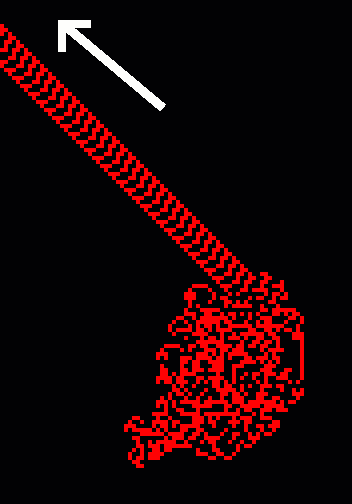|
Langton's Ant
(straight to the applet) Langton's Ant is cellular automata in the planethat
operates under very simple rules yet produces results which are seemingly
unpredictable when the rules are changed slightly.
Imagine you are an ant in a grid of large squares in the plane with eachsquare
you see colored black. Now as you are an ant, your mindless task is to do
this:
This kind of ant can be generalized as follows: Choose n colors (force the first to be black). Then for each color decide whether you want the ant to turn left or right when he lands on a square of that color. Then the ant repeatedly increments the color of the square he is on (modulo n) then walks to the square in front of him, looks at the color of the square he is on and then turns the direction you decided corresponding to that color. There are several questions you could ask about such an ant such as:
As far as I know the answer to each of these questions is unknown. I have created a applet to demonstrate the outcome of this cellular automata with 16 or fewer colors. |
||
 |